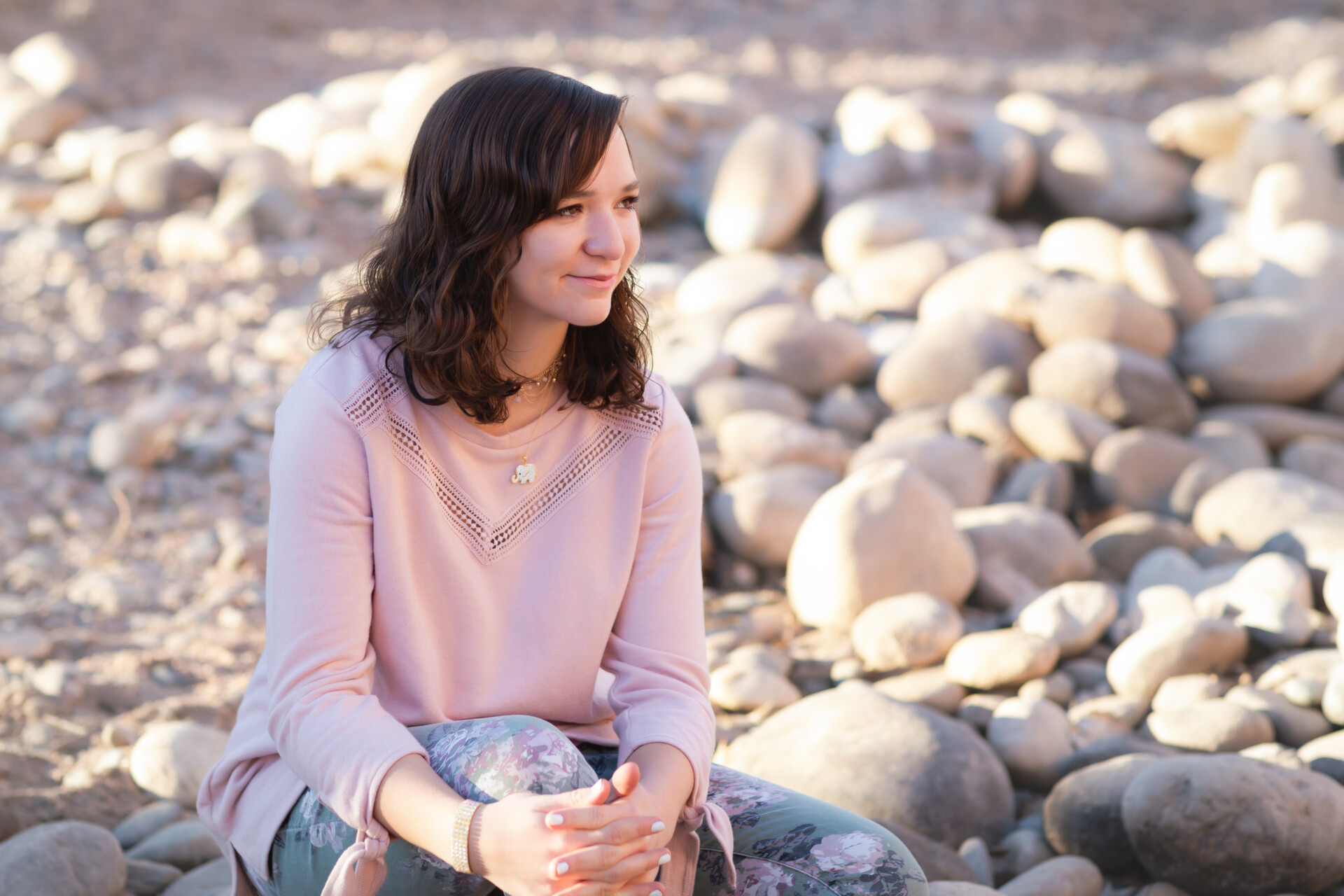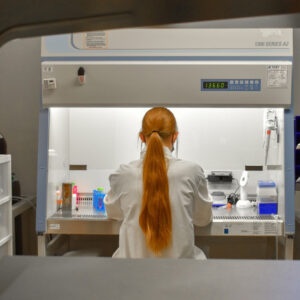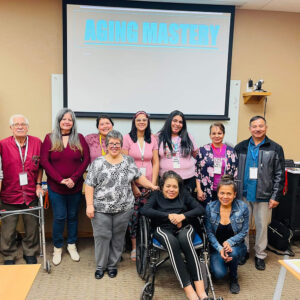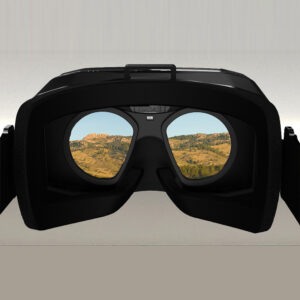Virtual reality's health benefits
Virtual reality may offer path to access benefits of nature for older adults
story by Josh Rhoten
video by John Cline
published Feb. 1, 2024
Stepping out on a nature trail in the mountains can be invigorating for both the mind and body, but not everyone can make it to a trailhead or the peak. Older adults may be homebound or limited in their mobility – potentially preventing them from accessing a valuable resource to support their mental and physical health late in life.
A team of researchers at Colorado State University is working to better understand the potential health benefits they may be missing out on and how a carefully crafted virtual reality environment could be leveraged instead of the real thing to help lower stress and improve cognitive ability. Their early work collecting data on campus in fall 2023 could inform future research into the topic.
Sara LoTemplio is an assistant professor in the Human Dimensions of Natural Resources Department and one of the faculty members leading the interdisciplinary CSU project. Traditionally trained as a cognition and neural scientist, she has been researching the restorative effects of natural environments for years. She said most of the existing research around key health metrics used in the field like heart rate variability and executive function have so far focused on younger adults.
“Heart rate variability refers to the small fluctuations in beats per minute that are closely tied to our ability to recover from stress. That variability is also connected to your executive function – or the ability to plan and focus,” she said. “We know that both metrics are improved in nature in younger adults, and we also know that both are key measures for the risk of Alzheimer’s. Therefore, we are hopeful that the findings will be relevant when we are looking at Alzheimer’s or dementia outcomes and how exposure to nature could potentially curb those risks.”
LoTemplio said a key question for the research is how these health metrics differ between real-world exposure to nature and the immersive virtual reality environments.
To test those relationships, Computer Science Ph.D. student Rachel Masters developed a detailed virtual environment that closely mimicked the forested Heritage Park Arboretum at CSU. Participants’ vitals were taken when they arrived for the study and collected again after either spending time in the virtual reality park, the real physical park on campus, or simply sitting in a quiet room for baseline comparisons.

Masters is part of the Natural User Interface Lab at CSU, which is led by Assistant Professor Francisco Ortega in the Department of Computer Science. That team – in partnership with faculty at the University of Minnesota – led early data collection efforts and work for this project. To build the virtual environment for the experiment, Masters selected computerized tree models that were the same varieties as those in the park and spent time carefully aligning them to their real-world locations to make the setting as realistic as possible.
“One of the challenges is that we do not fully understand how people react to nature on a granular level,” she said. “We try our best to make it as realistic as possible, but if a viewer perceives that they are in a virtual environment rather than the real thing because a tree is slightly out of place, it may take them out of the experience and limit benefits.”
Masters said the work continues earlier VR research in the lab based on “forest bathing” – a Japanese therapeutic relaxation practice where one spends time in a natural atmosphere and focuses on sensory engagement to connect with nature.
LoTemplio added that personal preferences about the environment, such as participants favoring water features or limiting animals, may also impact potential benefits. Luckily the VR setting allows for rapid comparisons of key variables like the location, she said.
Leveraging virtual reality as demographics change

Deana Davalos is a professor in the Psychology Department and director of the Aging Clinic of the Rockies. Her work on this project expands on similar efforts by her lab around other environmental interventions, like attending the symphony for older adults.
She said this kind of work will be key as the demographics change in America over the next few decades. Already the U.S. population age 65 and over grew nearly five times faster than the total population between 1920 and 2020, according to the 2020 Census.
Davalos said previous studies have shown that having plants around a living space improves moods and reduces agitation, and that gardening has shown similar advantages. So, it makes sense that exposure to nature in any form could be a valuable treatment apart from medication. The best part of VR though, she said, is that it is both customizable and accessible.
“There are not some of the serious side effects we see from medications, and it seems like a great path that gives people who may be limited to small or sterile spaces an opportunity to experience the benefits of nature,” she said. “This research supports that option while also giving us some understanding of who benefits most from it, the best conditions and other possible applications.”
The CSU team finished collecting data for this project in January and plans to use that information to apply for further funding from agencies like the National Institutes of Health in 2024.
Additionally, Masters will continue her work through the National Science Foundation’s Graduate Research Fellowship program in collaboration with Ortega and Professor Victoria Interrante at the University of Minnesota. This fundamental work will aid future research into how VR can support mental health in a variety of situations, such as substance abuse, suicidal ideation and challenges associated with being LGBTQ+.
Other CSU students participating in this project include Michaela Rice, Sharde Johnson, Sara-Ashley Collins, Jordan Rivera, Josh Hofecker and Dylan Schreiber. Both LoTemplio and Davalos are also affiliate faculty with CSU’s Columbine Health Systems Center for Healthy Aging, where Davalos also serves as an associate director for aging-related research. Additional research support comes from the CSU College of Natural Sciences Dean’s Faculty and Staff Success Program and the University of Minnesota.
Healthy Aging
As a land-grant institution, Colorado State University is dedicated to serving as a catalyst for interdisciplinary research and community outreach, so that people can live the healthiest and most productive lives possible. This special report from SOURCE explores the work happening at CSU and provides insights into active aging.




